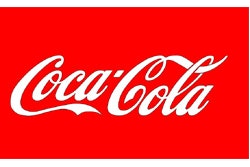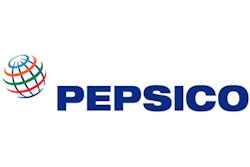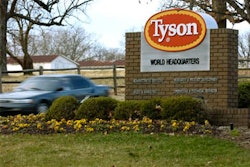This article originally ran in the October 2012 issue of Food Manufacturing.
Throughout its 89-year history, Just Born in Bethlehem, Penn., has produced such iconic candy brands as PEEPS® and MIKE AND IKE®. The family-owned company prides itself in maintaining a sense of tradition, while continuing to generate growth through innovative production processes.
When Russian immigrant Sam Born opened a small candy-making and retail store in 1923 in Brooklyn, N.Y., he advertised his daily-made creations with a sign that read, “Just Born.” Soon after, he invited brothers-in-law Irv and Jack Shaffer to join him in the business.
In 1932, Born moved Just Born's operations to an empty printing factory where the Saturday Evening Post used to be printed in Bethlehem, Penn. The company’s headquarters has remained there ever since.
Throughout its history, Just Born has acquired a variety of candy businesses, perhaps none more influential in the company’s future than its 1953 acquisition of the Rodda Candy Company in Lancaster, Penn. At the time, Rodda was best known for its jelly beans, but it also made a small line of marshmallow products, including Easter chicks that were produced by workers who hand-squeezed the marshmallow through pastry tubes.
After acquiring Rodda, Sam Born’s son, Bob — who had joined the company in 1946 — helped develop a way to automate the marshmallow-forming process in 1954. That innovation has helped Just Born become the world’s largest manufacturer of novelty marshmallow treats, with the company producing more than two billion marshmallow PEEPS each year.
| PEEPS are packaged into trays at the Just Born factory in Bethlehem, Penn. |
In addition to PEEPS, Just Born has introduced other classic candies throughout the years, including MIKE AND IKE chewy, fruit-flavored candies and cinnamon-flavored HOT TAMALES®. Other products manufactured by the company include TEENEE BEANEE jelly beans, ZOURS sour candies and GOLDENGERG’S PEANUT CHEWS®.
The Bethlehem plant, originally estimated to be fewer than 100,000 square feet, has expanded over the years to accommodate the company’s massive growth. The facility currently sits at just under 500,000 square feet and employs about 540 workers, or associates, as the company prefers to call them.
A smaller plant of about 90,000 square feet in Philadelphia, Penn., houses approximately 30 associates who produce the company’s GOLDENGERG’S PEANUT CHEWS candies. All other products are manufactured at the Bethlehem facility.
It’s A Marshmallow World
The process to produce PEEPS chicks, begins with three simple ingredients: liquid sugar, water and granulated sugar. These items are mixed and heated until the water is boiled off the mixture. Once the mixture reaches the ideal temperature, corn syrup, gelatin and other trace ingredients are added, essentially creating liquid marshmallow.
The liquid marshmallow is sent to a whipper, which uses thousands of high-speed blades to inject air in order for the mixture to achieve a fluffy texture. The result is a nicely aerated marshmallow.
The marshmallow is mechanically deposited into chick shapes onto a conveyor covered in a bed of colored sugar — yellow, pink, lavender or blue — to coat the bottom of the PEEPS. As the PEEPS move along the conveyor, compressed air is blown around the chicks to create a “tornado effect” that coats the remainder of the marshmallow.
The coated chicks proceed up a long, inclined conveyor which gives the product time to cool. The sugar bed is then separated from the marshmallow and returned to the beginning of the belt to be reintroduced into the process.
At the top of the incline, a machine stamps decorative eyes on each chick. “Here is an example of where [Just Born has] tried to automate the process,” says Mark Wright, Operations Business Director for Just Born.
According to Wright, the stamping used to be performed manually. As each cluster of chicks would go by, associates would hand-stamp the eyes. “[Automating the process] eliminated a lot of ergonomic issues from a repetitive-motion standpoint. From a quality perspective, it is much more consistent to apply the decoration in this way.”
Many of the production processes at Just Born have become more automated over the years, but Wright says this has not eliminated any jobs. “As something becomes automated, we are simply able to move that person somewhere else. It’s something we’re proud of.”
PEEPS products continue their journey on the conveyor system to the packaging area where overhead systems form trays which are automatically fed from above into position on a conveyor. The PEEPS are then fed into each tray, five chicks at a time. The trays are collated and each package is date-coded, time-stamped and marked with the production line on which it was produced and packaged.
Once packages are stamped, they move onto a flow wrapper which applies cellophane film over the product to maintain freshness. The flow wrapper can manage a variety of package sizes, ranging from five to 15 PEEPS per package.
Wrapped packages run through a metal detector to ensure food safety. Approved packages are cased manually and then automatically palletized at the end of the line. Pallets are then moved to the shipping area, where they are loaded onto trucks headed for Just Born’s warehouse on the other side of town where they will await distribution.
A Polished Product
| Packages of HOT TAMALES are collated and loaded into trays. |
The company’s MIKE AND IKE and HOT TAMALES products are created by first batching, blending and mixing liquid sugar, corn syrup, cornstarch and other trace ingredients. This liquid mixture is sent to a cooking system that injects steam to heat it. The result is a jelly-bean slurry that travels to the starch-casting operation.
The starch-casting operation features boards filled with cornstarch. A print board imprints the cornstarch with MIKE AND IKE shapes, and the cooked slurry is pumped into the printed shapes in the starch. Boards are stacked and loaded into curing rooms where the slurry will cool and harden until the next day.
Day-old boards are transported from the curing rooms to a machine which flips over the boards and dumps the cornstarch and the hardened centers. The dumped contents run through a sifting screen, which sifts out cornstarch to be recycled and put back onto the boards. The remaining centers continue on to the next process. Once boards are dumped, they are flipped again and refilled with starch to restart the cycle.
The colorless and flavorless centers continue on a conveyor into a cooling tunnel which cools the centers from about 100°F to about 65°F. Centers are then weighed and stored in trays until needed for flavoring.
The flavoring process starts by loading the cooled centers into large pans. Granulated sugar is added and then the pan begins spinning. As the product is tumbled, liquid coloring and flavoring are ladled into the pan. The coloring and flavoring attach to the granulated sugar, and the mixture begins to stick to the center to build a shell containing the color and flavor of the MIKE AND IKE or HOT TAMALES.
Colored and flavored product is loaded back into trays. At this stage, the product has a dull, powdered-sugar-like finish. The flavored pieces are then sent to polishing pans where associates add liquid sugar, a glaze and other trace ingredients to build up a protective, shiny coat as the product tumbles in the pan.
Wright says the polishing process adds an appealing look to the product as well as a sort of shelf-life protection. “Ideally, [the process] prevents moisture from getting into the piece and making it sticky, and it prevents moisture from getting out of the piece and making it hard and stale.”
Polished product will sit for at least four hours in a staging area to give the coat time to harden before packaging. As needed, finished product will be taken to packaging, where it will be loaded into a variety of package sizes — from 0.5-ounce boxes to 5-pound bags.
For packages containing a variety of flavors, such as MIKE AND IKE products, the different flavors are layered next to each other onto an inclined conveyor. As the layers of product move up the conveyor, some product cascades down, helping to create mixing action.
At the top of the conveyor, product is dropped into a rotary screen which tumbles and mixes the product and screens out any “doubles” — two-jelly-bean pieces that have become stuck together during the production process.
Doubles are melted down and reintroduced into the production process, along with any other pieces that may not have been up to quality throughout the process. These melted down pieces are used to create the red centers used to produce HOT TAMALES.
Once product falls through the rotary screen, it heads to a scale, which measures the candies into pre-determined increments. These increments are then dumped into a bagging machine below for packaging.
| Completed gingerbread PEEPS are robotically packaged at Just Born's facility. |
Boxed product is filled volumetrically rather than weighed. Candy is fed from above into each box; boxes are then sealed shut and date- and time-stamped. A visual inspection system checks each time stamp before the boxes proceed through a metal detector and across a checkweigher to ensure the correct amount of candy is in each box.
Boxes are collated and loaded into trays, which travel through a shrink wrapper for a protective film. Wrapped trays are conveyed to the shipping area, where seven palletizing stations supported by two robots automatically palletize them.
The palletizing operation is completely computer-controlled, so the machines know which product is coming down from the conveyors and the count of cases in each pallet. Pallets are stretch wrapped and loaded into trucks to be shipped to the company’s warehouse.
A Sweet Outlook
Just Born’s primary distribution is to retail stores in the United States, where millions of consumers purchase their classic candies each year. The company also has a growing international business in areas such as Canada, Korea and Israel.
In addition to its retail customers, the company has recently launched a new e-store and retail locations. The stores, called PEEPS & COMPANY®, are currently located in National Harbor, Md.; Bethlehem, Penn.; and the Mall of America in Bloomington, Minn.
Just Born has been affected by recent economic volatility, especially higher commodity prices. Wright says sugar- and corn-based products have posed the largest challenge when it comes to rising costs.
“I think everyone in the food, and particularly the confectionary, industry has faced the same challenges — primarily with commodity costs,” Wright says. “The pricing of commodities has been so affected by floods in the Midwest, by droughts in the Midwest, by hurricanes in the Gulf.”
Just Born has responded to increased costs by raising some of its prices, and the company also has reduced some of its package sizes. Theater-sized candy boxes have been cut from 6 ounces to 5 ounces.
But Wright says the company has focused on improving business efficiencies in order to avoid pricing and packaging changes. “We’ve really looked to focus on operational improvements so that we don’t have to take price action and don’t have to downsize.”
Despite an economic recession and rising commodity costs, Just Born has continued to experience growth thanks to its focus on innovation. “The consumer is interested in innovation — something new, something different,” Wright says. “We’ve [invested] capital in new processes and new equipment on the manufacturing floor to produce different types of products.”
The company has embraced innovation especially in its PEEPS brand, developing new marshmallow creations for various holidays, as well as more indulgent versions of the treats. A new chocolate enrobing system has allowed Just Born to produce chocolate-coated and chocolate-dipped PEEPS products that are quickly gaining popularity with consumers.
Looking to the future, Wright says Just Born will continue to develop new products and variations on traditional favorites. But the company will always hold a strong focus on its classic confections that have become familiar to so many. “People can relate to [these candies] from their childhood.”
Thanks to Just Born’s steady growth and popularity, children — and adults — will continue to create sweet memories for years to come.























